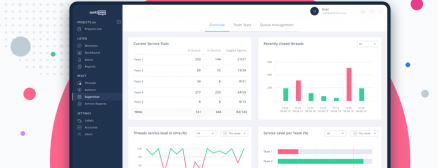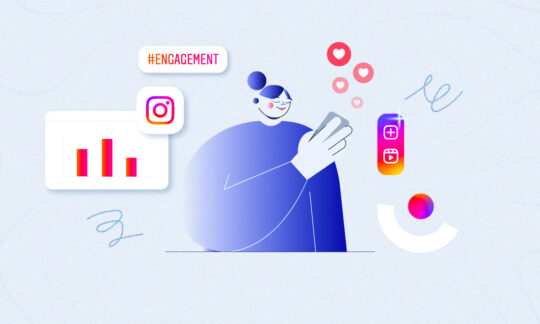The Basics of WhatsApp Marketing
WhatsApp is taking the world by storm! The little messaging app that could shocked us all when it appeared seemingly out of nowhere and started gaining hundreds of millions of users per year, only to be acquired by Facebook for an unprecedented $19 billion. Currently, it is the number one messaging app in the world – small wonder, then, that many companies are exploring its potential as a marketing vector. With that in mind, we’d like to introduce you, dear reader, to the basics of WhatsApp marketing.
WhatsApp’s rise to prominence
WhatsApp was originally founded all the way back in 2009 – in those dark, dark days before the mass adoption of smartphones. Could you believe it was once available on BlackBerries? It was one of the very first instant messaging apps designed specifically with phones in mind.
It quickly found mass adoption across the globe, especially in developing markets, where pre-paid phone plans without unlimited free texting are still the most popular form of service. By offering an almost free alternative (requiring a nominal subscription fee of $1 every year), WhatsApp quickly captured the hearts of hundreds of millions of users. By 2013, the company announced it had almost half a billion users.
Examples of WhatsApp marketing campaigns
While WhatsApp may enjoy massive popularity – 60 billion messages sent every day, 40% market penetration amongst users aged 18-29 – its potential as a marketing vector still hasn’t been realised. It’s a largely unexplored area, even after many years of market dominance.
As such, there is no single recipe for success when it comes to WhatsApp marketing. The best we can do is learn from good examples set by other brands.
The WhatsCook campaign by Hellmann’s is one of the most well-known campaigns to make use of WhatsApp. In order to promote mayonnaise as a cooking ingredient rather than just a simple condiment, Brazilian WhatsApp users were invited to take a photo of the contents of their fridges and send them to Hellmann’s. These photos were then looked at by actual chefs, who suggested recipes based on the contents of the photo – naturally, all featuring Hellmann’s mayonnaise.
This campaign was a smash hit – around 13,000 people used the service, spending an average of 65 minutes interacting with the brand. This, in turn, led Hellmann’s to roll out the campaign in other South American markets.
Or perhaps the campaign ran by Absolut Vodka in Argentina – who decided to launch their new bottle collection with a very exclusive party. Said party only had two invitations available to the public – and it was up to Sven, the bouncer to decide who got them. WhatsApp users were invited to talk to Sven and convince him that they deserved the invites. The campaign was a hit, generating over a thousand photos and videos of people vying for the invitation.
How is WhatsApp marketing different?
Unlike traditional social media marketing, WhatsApp does not focus on broadcasting content to users. Instead, successful WhatsApp campaigns focus on two-way interactions between brands and customers. Participation is key – it is no longer enough to just throw posts at your audience and hope someone decides to click on it. Make the customers come to you, instead.
WhatsApp also places a deliberate limit on group messaging – both groups and one-way broadcasts lists are limited to 256 users each. As such, there is an inherent emphasis on one-to-one communication.
Key Features of WhatsApp
WhatsApp offers several features that are important from a marketing standpoint. Although one-to-one and group chats don’t need an explanation, broadcast lists do – they’re basically a one-way group chat, in which the broadcast list owner sends out their content to their followers. These, however, are limited: 256 users, no more than that.
Recently, WhatsApp expanded its business offerings. Medium and large companies can enjoy access to their API – many apps, such as our own SentiOne already make great use of it. Smaller businesses can use the WhatsApp Business app which contains all of the essential functionality.
WhatsApp as a customer service channel
Of course, WhatsApp also makes for an excellent customer service channel. Messaging apps are already edging out phone calls and other “traditional” ways for customers to get in touch with brands, and it’s easy to see why – the convenience of messaging support on your phone and receiving an answer within minutes cannot be beat.
Due to the demographics involved, brands interested in conducting customer care through WhatsApp should only really be wary of one thing – response time. As most users of WhatsApp are millennials and Gen Z, they are accustomed to instant gratification and won’t stand for long wait times.
Otherwise, the usual rules apply: be direct, make sure you don’t waste the customer’s time, don’t overstay your welcome.
Closing thoughts
WhatsApp is here to stay – with over one and a half billion users, it’s hard to imagine anyone toppling its dominance any time soon. Investing in WhatsApp marketing is not only the smart choice, it may soon become a necessity – especially if your target demographics are millennials and Gen Z.
As such, you should look into proper tooling to make your life easier. Customer service automation solutions, such as our own SentiOne, already offer or are introducing WhatsApp support in order to fully take advantage of this exciting new platform. If you’re not yet using a customer service automation package – or are in need of a top-of-the-line chatbot solution – contact us and schedule a free demo.



